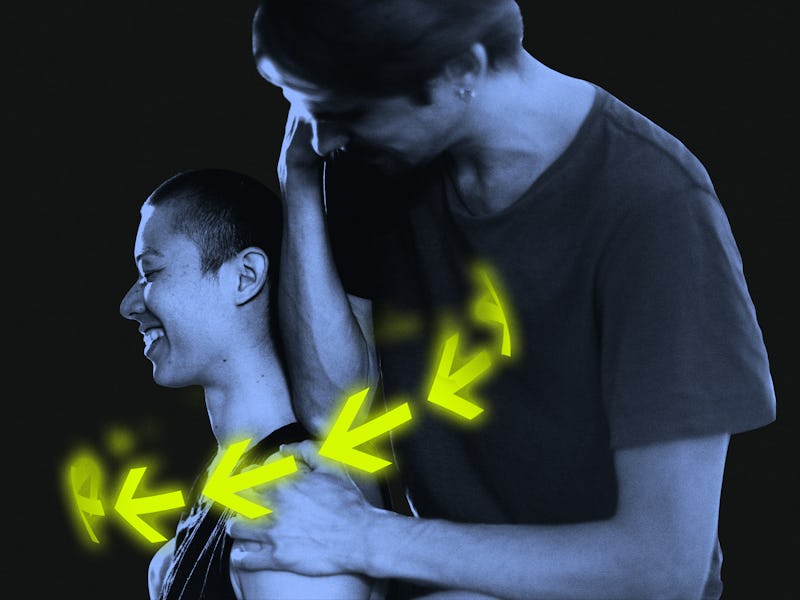Can Massages Promote Longevity? The Surprising Truth About the Ancient Practice
Finally, something that is as good for you as it feels.

Some best practices for longevity can be a real bummer. Everyone knows that regular exercise is good for them, but not everyone enjoys it. Eating a few cups of veggies with every meal may not be as fun as a side of fries.
But every so often, the things that are good for us feel good too. Case in point: the humble massage.
A massage for most people is a spa-day splurge, but it’s also an ancient medicinal practice. A thorough rub-down is a great way to celebrate the end of a stressful semester, but there’s more to it than much-deserved relaxation. At its best, a good massage improves bodily motion and function. While science doesn’t say that each massage adds years to your life (not yet, anyway), the benefits of regular massages (for those lucky enough to get them) can add up over time.
What can massages help with?
While massage targets muscles and soft tissue, its goodness spreads far and wide throughout the body. It can help alleviate chronic pain, stiffness, limited range of motion, headaches, and more.
On a broader level, a quality massage works magic on the autonomic nervous system, says Ana Baldioli, integrative medicine coordinator at the University of California, Los Angeles Health. The autonomic nervous system comprises the sympathetic branch — the body’s “fight or flight” stress response mechanism — and the parasympathetic branch — which dictates involuntary functions like breathing, heartbeat, and digestion.
Baldioli tells Inverse that massage can coax the parasympathetic nervous system to improve. “When the body and the nervous system are more relaxed, then a lot of other processes can get better,” she says. Digestion, for one, may get better because the parasympathetic nervous system got a tune-up.
Massage also promotes blood and fluid circulation. According to Christopher Bise, professor of physical therapy at the University of Pittsburgh, our bodies contain a ton of non-blood fluid from cells and tissues that don’t get reabsorbed into our capillaries. Bise tells Inverse this fluid is called lymph, or lymphatic fluid and contains everything from fats and nutrients to cancer cells and white blood cells called lymphocytes. When the lymphatic system doesn’t drain lymph the way it ought to, perhaps due to genetic mutations or damage from surgery or radiotherapy treatment, it can result in lymphedema. This condition of retaining lymph can cause physical discomfort, but lymphatic drainage massage can relieve the pain and swelling by manually draining the fluid.
Provided someone enjoys massage, this treatment comes with psychological benefits, too. A gentle touch from another person can go a long way, Baldioli says and relieves mental stress as well as physical.
What’s the difference between a spa massage and physical therapy?
When you think of a massage, you may imagine gentle flute music in the background, dim lights, aromatherapy, and an abundance of body oil. However, physical and occupational therapists also integrate massage into rehabilitation practices, though the term might be refined to “soft tissue mobilization.” Bise describes this therapy as “trying to change the relationship of tissue to each other” by assuaging trigger points, or knots.
The target of this exercise, Bise says, isn’t simply relaxation but also testing for an increased range of motion. Physical therapy also may pair a massage with a set of exercises to strengthen the targeted muscles.
Bise says there are limits on what massage can do, however. “Will massage alone cure your low back pain? Probably not. But it will certainly modulate your symptoms and make you feel better,” Bise tells Inverse.
A small randomized, controlled trial published in 2020 showed that the use of a massage chair plus physiotherapy effectively relieved lower back pain. It underscored that the two, in concert, made for the best option. Bise adds that massage is also a non-invasive option for pain relief. Compared to surgery, injections, and opioid prescriptions, a massage chair makes for a lower-risk, even comparably cheaper option.
How often should I get massaged?
This answer varies from person to person, Baldioli says. Those with chronic pain disorders, like fibromyalgia, may feel much better after weekly massages, and insurance may even cover the expenses. Bise says, however, that it’s a common misconception that a patient can receive a “prescription” for a massage. Bise notes that insurance may cover massage as part of physical therapy, but in his experience, patients and their doctors need to advocate for it.
Most patients, Bise says, don’t need a regular massage so much as the occasional tune-up. Post-injury or surgery, a patient may practice physical therapy exercises on their own to strengthen muscle; after working that area, a massage might help relax it again. For the most part, massage and movement are two sides of the same coin.
This article was originally published on